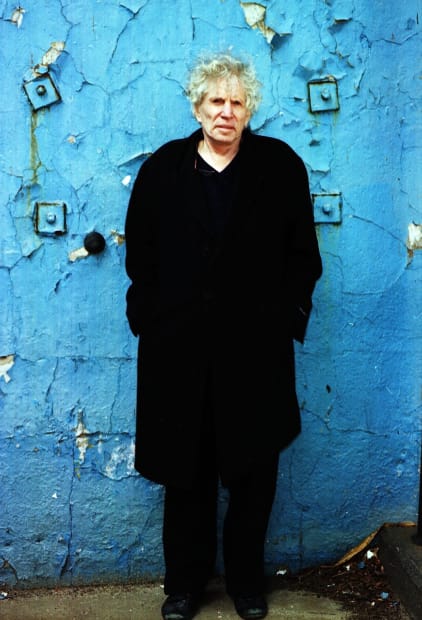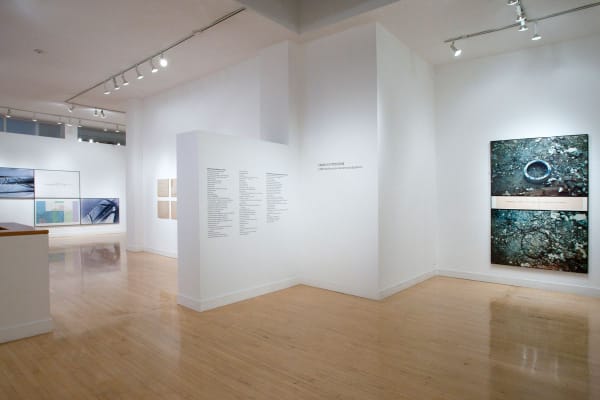-
-
Works
-
 The Estate of Dennis OppenheimLandslide, 1968Color photograph and text4 panels, overall: 50 x 139 inches
The Estate of Dennis OppenheimLandslide, 1968Color photograph and text4 panels, overall: 50 x 139 inches -
 The Estate of Dennis OppenheimMaze, 1970Photographs and text5 panels, overall: 50 x 132 inches
The Estate of Dennis OppenheimMaze, 1970Photographs and text5 panels, overall: 50 x 132 inches -
 The Estate of Dennis OppenheimOne Hour Run, 1968Color photography, collage stamped topographic map, collage boundary line photograph1 map, 1 text, 2 snow photos: each 40 x 60 inches
The Estate of Dennis OppenheimOne Hour Run, 1968Color photography, collage stamped topographic map, collage boundary line photograph1 map, 1 text, 2 snow photos: each 40 x 60 inches -
 The Estate of Dennis OppenheimStar Skid, 1977B&W and color photography, topographical map, handstamp2 panels, total: 60 x 80 inches
The Estate of Dennis OppenheimStar Skid, 1977B&W and color photography, topographical map, handstamp2 panels, total: 60 x 80 inches
-
-
Exhibitions
-
-
Press
-
“Tehran museum to reopen with works by artists who protested Vietnam War,” Tehran Times, January 27, 2021
William Menking, "Lebbeus Woods, Dennis Oppenheim, and Krzysztof Wodiczko projects featured at Slought Foundation," The Architects Newspaper, April 10, 2017
William Corwin, “Just Trying to Fit In,” The Brooklyn Rail, September 1, 2016
David Ebony, “A Dialogue with Nature: Dennis Oppenheim at Storm King,” Art in America, July 15, 2016
Susan Hodara, "At Storm King, a Landscape of Stars, Rulers and Pipes," The New York Times, June 24, 2016
Thomas Gebremedhin, "Dennis Oppenheim Show Opens at Storm King," The Wall Street Journal, May 18, 2016
Scott Indrisek, "Getting Skewed at Storm King with Dennis Oppenheim and Josephine Halvorson," Blouin ArtInfo, May 16, 2016
Hilarie M. Sheets, "Storm King to Present Earthworks by Dennis Oppenheim," The New York Times, November 26, 2015
"Dennis Oppenheim: Systems of Information Rather Than Abstract Gestures," Artlyst, June 4, 2014
Thomas Mitchell, "Homage to Absurdity: The Restless Legacy of Dennis Oppenheim," Hyperallergic, May 14, 2014
Martin Shaw, "Dennis Oppenheim Strange New 'Tree' Exhibition Opens at Yorkshire Sculpture Park," The Huddersfield Daily Examiner, November 22, 2013
Joe Jarrell, "A Step-by-Step View of Artist Dennis Oppenheim as he Prepared for a Recent Los Angeles Exhibition of his Traveling Retrospective Show," Joe Jarrell Review, 2012
Christian L. Frock, "Information Changes as Surface Conditions Change: Dennis Oppenheim at Haines," KQED, June 12, 2012
David Ebony, "Dennis Oppenheim: Edelman Arts," Art in America, 2008
Robert Stearns, "Dennis Oppenheim: Public Action," Sculpture, October 2008
"Dennis Oppenheim: The Assembly Line," Sculpture, April 2008
Elizabeth Lynch, "Dennis Oppenheim: Wave Forms," Sculpture, January/February 2008
"The AI Interview: Dennis Oppenheim," Art Info., Oct 4, 2006






